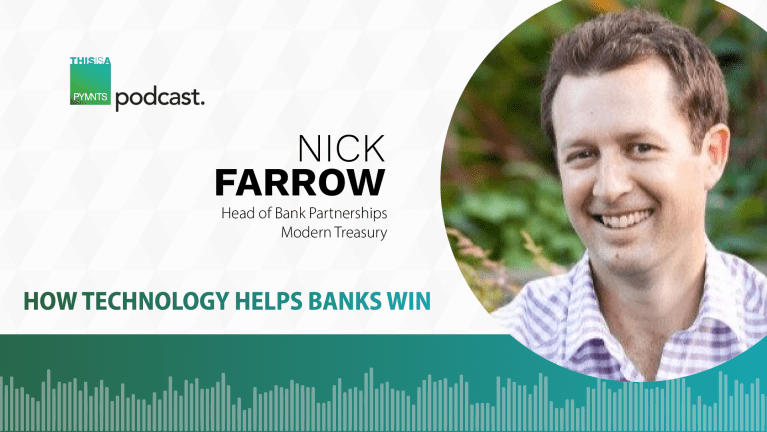
Banks are accustomed to vying with FinTechs for customers, but increasingly, they’re partnering with them as a way to win new businesses and better serve their customers.
Access to FinTechs’ technology and speed to market is driving that evolution. While banks may not have the technological edge many FinTechs offer, they do have an advantage in the fact that they operate as regulated financial entities, have huge customer bases and own the payments rails infrastructure on which money travels.
“Most of the FinTechs that compete with banks on some level actually run on the bank rails already,” said Nick Farrow, head of bank partnerships at Modern Treasury.
But even working together so closely, gaps exist between banks and FinTechs, and it’s primarily to do with how the two entities approach innovation and build products. To close the gap, Farrow said banks need ask themselves a key question: What pain points are they trying to solve, through technology, for their customers?
“Most FinTechs,” he said, “start with the pain point, as opposed to a product rail or product type, and instead of trying to ‘fit’ a product to a particular customer situation.”
FinTechs, he said, tend to know their end customers quite well and focus on creating software that makes payments easier, faster and more reliable.
To address those consumer pain points, he said, banks ultimately must choose between two strategies (and may sometimes choose both): building solutions or buying them. The first is simply an in-house effort; the second is one where a bank enlists the aid of systems integrators or payments firms such as Modern Treasury, which help track money — its own offerings run over traditional bank rails.
Read more: Banks Leap From Legacy Core Systems to Innovation, Real-Time Capability
There’s another way to buy expertise, such as when a bank simply acquires a FinTech, if the capital is in place to do so.
“As the market has been shaking out, there have been plenty of opportunities to buy FinTechs that have not quite ‘made it,’” said Farrow.
The Partnership Model
The partnership model offers what Farrow termed a “low lift” in terms of capital commitment to truly understand and serve customers.
“If you find a partner that can help with that, you really have to invest in that partnership,” he said.
Those partnerships can run the gamut, from customers shared between the bank and the FinTech, to white-labeled relationships (utilizing third-party software). In the latter case, the bank is buying the solution and putting it in front of customers, he said.
Additionally, there will always be the legacy core providers such as FIS and Fiserv, which offer know your customer (KYC) and anti-money laundering (AML) services that help banks grapple with everyday operational challenges behind the scenes.
Along the way, banks can move beyond the confines of traditional debit and credit products. But with enough data on hand, analyzed in real time, banks can come to market more quickly with relevant offers and products offered in context.
See also: Payments Go Real-Time
Banks are increasingly recognizing that they cannot build every software product and customer experience themselves. However, by making it easier for FinTechs to integrate into their core products, they can remain at the center of customer (individual or commercial) relationships, especially in B2B. Cash management forecasting tools, for example, are becoming especially valuable to corporate clients.
Looking ahead, banks will make the necessary pivots beyond legacy technologies and systems, and legacy mindsets will change.
“Banks are going to have to want to leap forward to the next generation and think about what customers will need 10 years from now,” Farrow said, “and now they can do it fairly quickly — without a huge technical lift.”